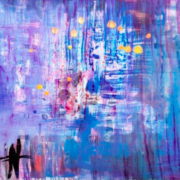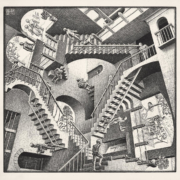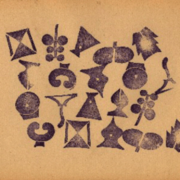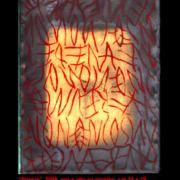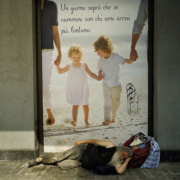The presentation of the new edition of the Italian web journal Funzione Gamma: The different applications of the group device, within clinical, social and organizational institutions
What is the topicality of working with groups, 70 years after the article of Bion and Rickman on the Northfield’s experience?
What developments could be opened by the pioneering importance of that research, which took its fundaments from the Freud’s discovery, the unprecedented discovery of the unconscious?
What is the constant which nowadays permits to psychotherapists of different trainings, of dialoguing and debating on the functionalities of a device born to face the difficulties of the institutional case?
This edition grants the papers of ten authors and each of them testifies starting from his characteristic theoretical and clinical vertex, the possible encounter with the efficacy of a tool which permits since the origins of its applications, to treat the Institution’s symptom.
This point was that on which it was possible a number of Funzione Gamma that reflects on that field’s dimension, within the individual’s subjectivity has a space through the experience of a speech’s sharing that permits of authorizing himself to occupy a place from which it is possible questioning himself and saying.
The Institution in the rigidity of its functioning, in the economy of its logic, and in the politics which governs it, put aside subjectivity in the necessity with which it replies to the paradigm which founds and makes it suited to the contemporary discourse: efficiency and performance. What is wrong, it is at the same time, symptom and question so that it could be listened and not kept silent the difficulty, what lacks, and the discontent which lives in it: the application of the group device can offer to them the space for being denounced, favouring that passage which permits to the thought “of many” of being gave back instead as “of each one”.
Each author regarding its three levels, clinical, social and organizational, brings to the light the reverberating feature of the myths which founds it, history and memory as well as limit, which often retains relationships and the system of roles and functions beyond the desire of its professionals always more exposed to the risk of suffering their iteration.
How is it possible within the Institution which wants that things can go, to protect who lives in it and makes it possible, in his right of asking that things can go also for him?
The article of R.D. Hinshelwood describes with accuracy that way through which the group applied to an équipe of professionals which deal with severe personality
disorder, can protect them from acting countertransference within the
psychotherapeutic relation, thus impeding to the patient to run the risk of finding
himself in a place of treatment unable of accomplishing its function because of a
space’s absence in which he could be thought by those are following him in its
treatment and are exposed to the impact of its traumatic experience. The équipe’s
meeting is presented by the work of E. De Francesco as a tool able of preserving the
Institution from the possibility of failing that “network’s functioning” which feed
itself during the time of the clinical discussion on the subject’s case, and it establishes,
thanks to the contribution of each professional, a logic in the direction of the
treatment which doesn’t discover them feeling alone, to work on difficulties.
R. Vandermeeren & M. Hebbrecht unfold the functionality of the group device in
relation to the treatment of one of the new symptom’s forms- the addiction from
alcohol abuse-, showing the opportunity opened by it within the treatment unit, of a
place in which the subject can return to remind, to give a place to the pain and to the
fear that the abuse of the substance has the effect to cancel and instead finds in the
tell, a place to the toxicity notching something of the compulsion to act it, also
supporting him when the admission ended. Working with addiction compares
Institution with the difficulty of impeding relapses and embanking the autistic
jouissance of a practice which sees the subject’s choice of doing without the other,
risking of serving as testified by the experience of A. Bruni, that same subject’s
feeling of “being without hope”, in a justification of the therapeutic failures that
appeals to the symptom’s recidivism and emerges within the group of the
professionals, as what paralyzes them from taking initiatives.
The field of the group as a place in which the impasse can be recognized as what is
possible to work on and transformed in the perspective which permits to
professionals of restarting, it is the dimension within the volunteers of a civil
protection’s association, were able to face as testified by S. Di Cioccio, the
difficulties of managing that emergency followed to the earthquake, able of
comparing them with the experience of limit, showing the relevant group function of
guaranteeing new spaces of subjectivation. Who is called within it to the role of
keeping it, doesn’t drive or interpret but gives speech to those who are taking part in
it, so that each of them can authorize himself to an own position. The group of
multifamily psychoanalysis presented by A. Narracci as an applied tool to the Mental
Health’s Institutions, works on a triple level, permitting that the Institution couldn’t
be lived in terms merely custodial by the patient and its professionals, that the
approach to the psychotic could be read in a new way recognizing to him subjectivity
and responsibility regarding his psychopathology, and that it could be possible to
work on the dysfunctionality of the family system.
Within the psychiatric services which deal with the emergency due to the subject’s
acute crisis, the group in its psycho-educational aspects as testified by G. Ducci & A.
Marzano, shows the capacity of being a valid support’s tool to the pharmacologic and
psychotherapeutic treatment which permits to the subject of making the experience of
a regulated other who has the duty of scanning a time and introducing a rhythm in the
confusional experience which lodges in him and it is strengthened from finding
himself forced to be admitted. So the practice with groups in Institution can be a presence’s vehicle of a not persecutory third able, if who permits its work respects precise conditions regarding ethic and responsibility, of producing a regulation that M. De Lorenzo illustrates in his work with children victims of violence.
It follows that in this edition, the practice and theory on the group as a working tool applied to the clinic work, to the social, and to the organization, can’t set aside from the interest and the evolution of a research in which psychoanalysis as said by A. Americo, rests the motor in considering social and cultural changes which carve the discontent’s forms in its psychopathologic declensions, and from taking under observation the dynamics which govern its same Institution. The article of P. Russo, invites in fact to reflect on the necessity for the psychoanalytic movement of preserving itself in the attempt to constitute itself as a group in the forms of its societies and institutes of training which transmit his teaching, from any group’s necessity .
Concluding this introduction on “The different applications of the group device, within clinical, social, and organizational institutions”, I would like to thank each author for having accepted the invitation to take part with enthusiasm and a great willingness, in a project which strongly supported the possibility of being able to receive and make possible the dialogue between different theoretical and clinical approaches regarding a practice of which Funzione Gamma nourishes the research unfolding the potential of its topicality.
The number enjoys the opportunity of being imagined and represented in its theme as in the desire with which each author developed it, by the painting “Festim” of the Portuguese artist Natália Gromicho. I would like to thank Natália for her gift.
Sabrina Di Cioccio

